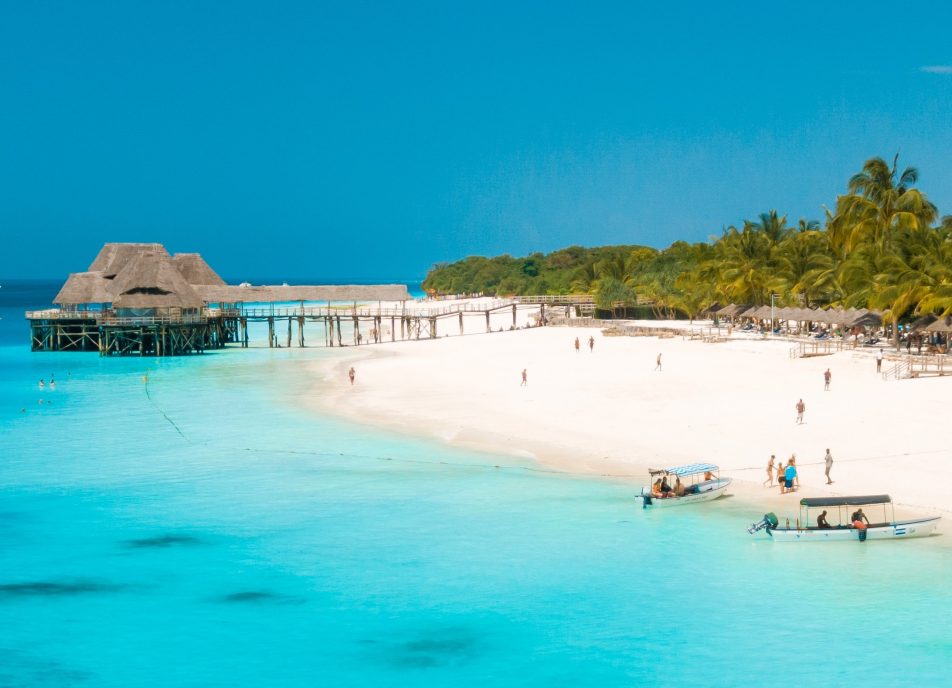Coastal Market and Real Estate
Leveraging its strategic geographical location, Mombasa has seamlessly established itself as Kenya’s premier tourist destination, attracting vacationers in pursuit of coastal serenity. Yet, beyond its pristine beaches, Mombasa presents a diverse array of investment opportunities spanning office spaces, residential developments, retail outlets, and industrial ventures. The ongoing infrastructure investments coupled with Mombasa’s status as the region’s busiest port will catalyze additional business prospects across various real estate segments, amplifying opportunities for investors.
Highlights
Mombasa is the fourth largest contributor to Kenya’s GDP.
- Significant infrastructure investments are opening the coast’s economy.
- Emergence of prime residential developments rivalling Nyali.
- Dongo Kundu SEZ to revolutionize the coastal industrial sector.
- Retail developments on the rise.
- Grade A offices lacking at the coast – an investment opportunity.
- Mombasa stands unrivalled as Kenya’s hospitality epicenter.
- Hospitality sector continues resurgence post pandemic
Economy
Mombasa anchors the economic pulse of Kenya’s coastal regions, contributing 4.9% to the nation’s annual GDP as per the 2023 Gross County Product Report by the Kenya National Bureau of Standards (KNBS). While Nairobi City County stands as Kenya’s primary economic powerhouse, channeling over a quarter (27.5%) of the nation’s GDP, Mombasa’s economic significance is underscored by only two other counties, Nakuru (4.9%) and Kiambu (5.7%), matching or surpassing its economic input. Additionally, the surrounding five coastal counties—Kwale (1.2%), Kilifi (2.1%), Tana River (0.3%), Lamu (0.3%), and Taita Taveta (0.6%)— combine to contribute an average of 4.5% of Kenya’s GDP.
Tourism stands as the leading force behind the coastal region’s economy, comprising 45% of its economic activity. Meanwhile, maritime operations, notably centered at the Port of Mombasa, secure a substantial share of 15%, facilitating the handling of a significant portion of East Africa’s imports and exports. Moreover, Mombasa’s economic landscape is enriched by agricultural pursuits (5%), agricultural industry (8%), fisheries (6%), forestry (4%), and mining (2%), each contributing uniquely to the region’s prosperity and sustainability
Infrastructure
Over the past eight years, Mombasa has witnessed a notable surge in infrastructure investment, ushering in a new era of development. Among the significant completed projects are the Mombasa Port Development Project, an endeavor that boosted the annual container capacity of the Port of Mombasa to 2.1 million. This initiative is complemented by the enhancement of vital transportation arteries such as Kipevu Road, the Standard Gauge Railway, the Makupa Bridge, and the expansion of the Mombasa-Mariakani Highway. The momentum of progress continues with a plethora of ongoing projects poised to further elevate Mombasa’s infrastructure landscape. Foremost among these is the Dongo Kundu Special Economic Zone, a beacon of economic potential, alongside the ongoing construction of a meter gauge railway linking the Mombasa Standard Gauge Railway terminus with Miritini. The Bagamoyo-Malindi Road Project and the Dongo Kundu Bypass are also in the pipeline, promising to enhance connectivity and accessibility within the region. The 54km Bagamoyo-Malindi Road is set to be completed in quarter one of 2025 at a cost of KES 15 billion. Looking ahead, Mombasa anticipates the realization of proposed facilities that will further fortify its position as a key economic hub. Notable among these are the Dongo Kundu Berth and the Mombasa Gate Bridge. Moreover, Mombasa proudly serves as the gateway for Kenya’s undersea internet cables, underscoring its pivotal role not only in regional commerce but also in global connectivity and communication networks. These significant infrastructure projects are poised to boost property values not just along their routes but also at the locations they connect to
Asset Classes
- RESIDENTIAL
Kizingo is Mombasa Island’s epitome of luxury living, hosting the prestigious State House Mombasa within its confines. Meanwhile, Ganjoni and Tudor areas have carved out a niche as upper-middle-income neighbourhoods. Beyond Mombasa Island, Nyali emerges as the coastal destination of choice for discerning residents. However, the allure of Nyali has been somewhat dimmed by the emergence of towering structures in the area, prompting the rise of exclusive enclaves further north, particularly in Kilifi County. Prime residential developments like Vipingo Ridge, Awali Estate, Pazuri Homes, and Vipingo Beach Estate have flourished, offering an alternative haven for those seeking exclusivity and tranquility. In the realm of affordable housing, Mombasa County has made significant strides. In 2023, it unveiled 584 housing units through the Buxton Point, Phase I project. Developments in the pipeline include Buxton Point, Phase II (with 1400 units), Mzizima Estate (1700 units), Kongowea Village (1700 units), and Likoni Flats and Likoni Customs Estates (3200 units), collectively aiming to address the growing demand for affordable housing options in the region. The allure of the greater Kenyan coast, encompassing destinations like Malindi and Watamu, lies in its stunning beaches, rich biodiversity, and accommodations tailored to holiday enthusiasts. Some of the most breathtaking beaches, offering panoramic views of the Indian Ocean and stunning sunrises are renowned destinations such as Diani Beach, Nyali Beach, Watamu Beach, Kikambala Beach, Gazi Beach, Tiwi Beach, Chale Island Beaches, and Shela Beach in Lamu.
- INDUSTRIAL
Industrial focal points such as Shimanzi, Changamwe, Kikambala, and Miritini form the backbone of Mombasa’s industrial landscape. However, the ageing warehouses in these areas reveal signs of inefficiency, reflected in their modest average rental rates currently standing at KES 35 per square foot per month. The absence of modern facilities, including cold storage warehouses, not only highlights an immediate necessity but also presents an enticing investment opportunity ripe for exploration. The eagerly awaited 3000 acres Dongo Kundu Special Economic Zone (SEZ) holds promise in addressing these deficiencies. It is poised to introduce upgraded infrastructure and bolstered industrial capabilities, heralding a new era of progress. In the primary industrial hub of Shimanzi, land values typically hover around KES 80 million, as indicated by recent market transactions. Moreover, land values appreciate significantly as one gets closer to the Port, underscoring the strategic importance of proximity to maritime activities.
- HOSPITALITY
Moi International Airport (MIA) serves as a crucial gateway for promoting tourism in Mombasa by offering direct flights to the Kenyan coast. Following the Covid-19- induced challenges, the hospitality sector is experiencing a revitalization. There are promising signs of recovery in the tourism market as the 2023 international arrivals through MIA surpassed pre-covid levels – 154,203 arrivals in 2023 compared to 128,222 in 2019 – a 20.26% increase. With at least 136 beach hotels and a total of 4,858 guest rooms, the coastal region is a hub of hospitality. Among these are upscale establishments like Hemingways Watamu, Sarova Whitesands Beach Resort and Spa, English Point Marina, Kilua Beach Resort, The Majlis Resort, Serena Beach Resort and Spa, PrideInn Paradise Beach Resort and Spa, Travellers Beach Hotel and Voyager Beach Resort that offer luxurious experiences. Beach hotels continue to post higher occupancy rates than top-tier hotels in Nairobi.
Data compiled for the Kenya National Bureau of Statistics.


